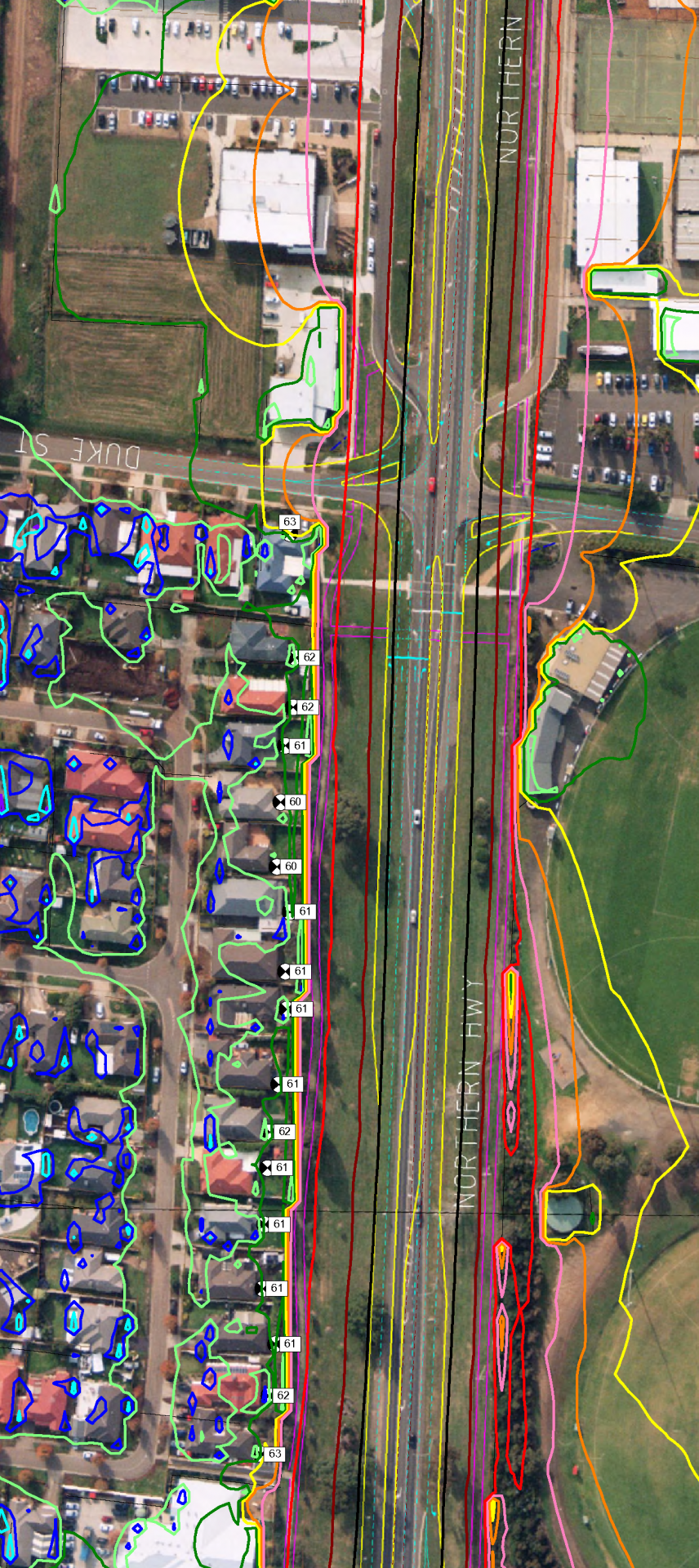VicRoads Wallan Area Network Improvement
Wallan is located adjacent the Hume Freeway in the Shire of Mitchell. At the time of project comments, the sole southerly access to the Hume Freeway from Wallan and the Northern Highway was via the Northern Highway interchange to the south of the Wallan town ship. The section of the Northern Highway south of Wallan exceeded capacity during peak periods, resulting in traffic queuing back onto the slow lanes of the Hume Freeway, increasing the potential for rear end crashes.
To cater for the predicted growth in the Wallan township, it was intended to provide an additional southerly access to the Hume Freeway through the addition of southerly ramps and a new freeway overpass at the Watson Street interchange, as well as the duplication of Watson Street and associated intersection improvements between the Hume Freeway and the Northern Highway. In addition to these improvements, it was intended to duplicate the Northern Highway south of Watson Street
Octave Acoustics was engaged by VicRoads to undertake a Traffic Noise Impact Assessment for the Project. This involved the assessment of traffic noise impacts and potential mitigation associated with three scenarios:
- Hume Freeway / Wallan Whittlesea Road Interchange.
- Wallan Whittlesea Road (Watson Street) Duplication and Northern Highway / Watson Street Intersection Improvements.
- Northern Highway Upgrade (Hume Freeway to Watson Street).
Ambient noise monitoring was undertaken at six locations adjacent the project corridor. The results of this monitoring were used both to assist in defining the Project Objective Noise Levels (PONL) and to validate/calibration the traffic noise model developed for the assessment. Model validation involved the comparison of model/calculation results for the current year (2018) with the results of noise monitoring. This process indicated an excellent level of correlation and hence the noise model considered to be validated and robust.
The input parameters to the noise model were then amended to reflect the Design Year 2031 (being ten years after opening of the project) under two scenarios:
- The project had not proceeded (Do Nothing)
- The project had been completed (With Project)
The results of the ‘No Project’ scenario were then used to finalise the PONL and then the ‘With Project’ scenario was run. Results of the ‘With Project’ scenarios indicated relatively limited instances of PONL exceedance, principally at receivers to the west of the proposed south facing freeway ramps. These exceedances occurred at dwellings and were limited to 1-2dB(A) magnitude (exceedances that would be imperceptible with respect to PONL compliance). The limited nature of PONL exceedance was not surprising as the goal of the Project was to reduce network congestion; reduced traffic volumes generally result in reduced traffic noise.
Finally, the noise model was run several times in the Design Year under the ‘With Project’ scenario in order to develop a specification for mitigation to achieve PONL compliance at the receivers to the west of the proposed ramps. Due to relatively low posted speed limits proximate the ramps, the most effective form of mitigation was determined to be noise wall treatment. The noise wall required for PONL compliance was approximately 235m long and varied in height between 2.5m and 3m.
